By Dick Moeller
Today, we are going to the field with our implementing partner in the South Central Ethiopian Synod (SCES) of the Mekane Yesus (Lutheran Church of Ethiopia, with more than 6 million members!). Water to Thrive is implementing 10 projects in a very needy area with low clean water coverage near Hawassa in the Malga district, about 1 hour from our hotel. We will be visiting 3 projects sites today, 2 finished spring protection systems, Lalima and Kuchale and one hand dug well, Darashe, which is about 2 weeks from being finished.
Typical of our spring systems, these first two sites are located in deep verdant valleys which provide a year round source of water for the springs. Having rained recently, the paths down to the projects are very slippery and treacherous.
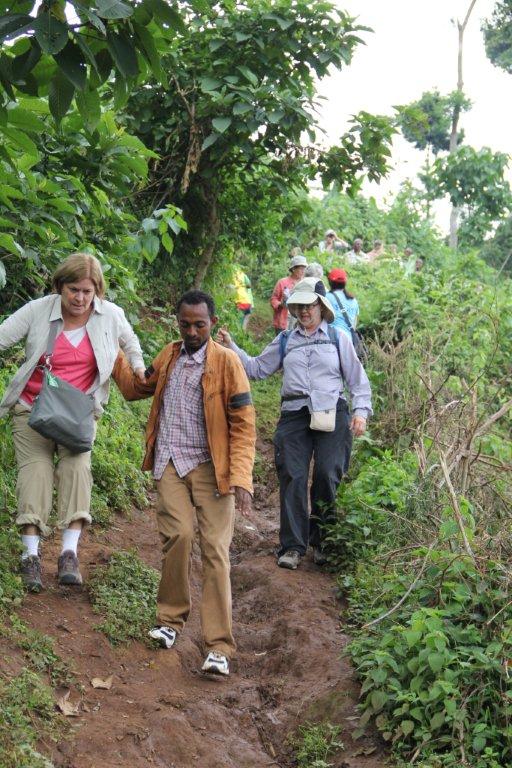
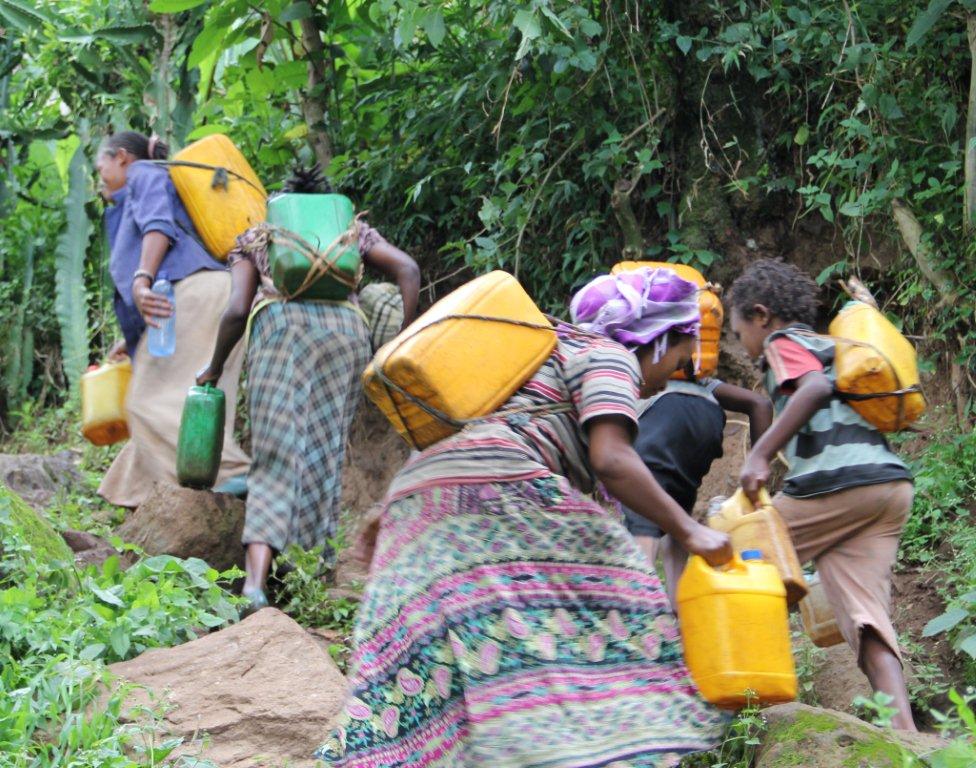
We could not help but notice the contrast…..while we are making our way down the hill slowly and with help, three women and two children pass us going up the hill, moving with ease and speed, coming from the nearby water point. Notice in the picture above, each is carrying two jerry cans!
At both the completed spring systems, we are greeted by the community and the water committee, all with smiling faces, expressing their gratefulness for clean water. They mention numerous times how much safer it is now for those gathering water. Both projects are literally built on the side of the hill with sharp drop offs, that are now protected by concrete aprons and fencing.
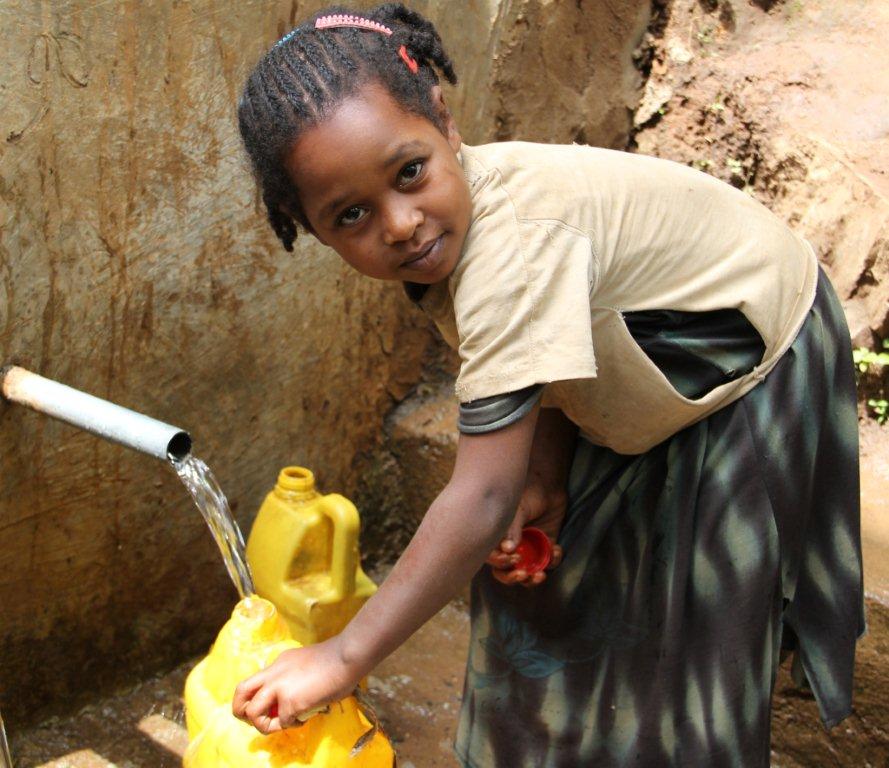
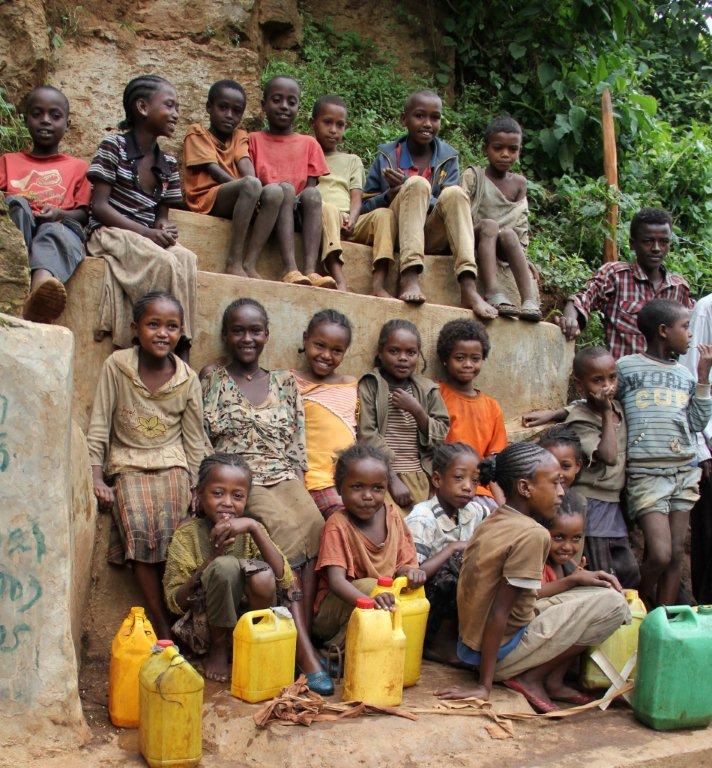
One thing was very noticeable at these two sites…..there were many young, very young children carrying water for their families, more so than we typically see at many other sites. At Kuchale (top picture) the reservoir for the water point provided a natural place for them to gather. In this group, when asked how many go to school, nearly all raised their hands!
An important element of our projects with SCES is water sanitation and hygiene (WASH) training for the communities. Each community participates in constructing a demonstration latrine, so that families can learn the proper construction techniques for their homes.
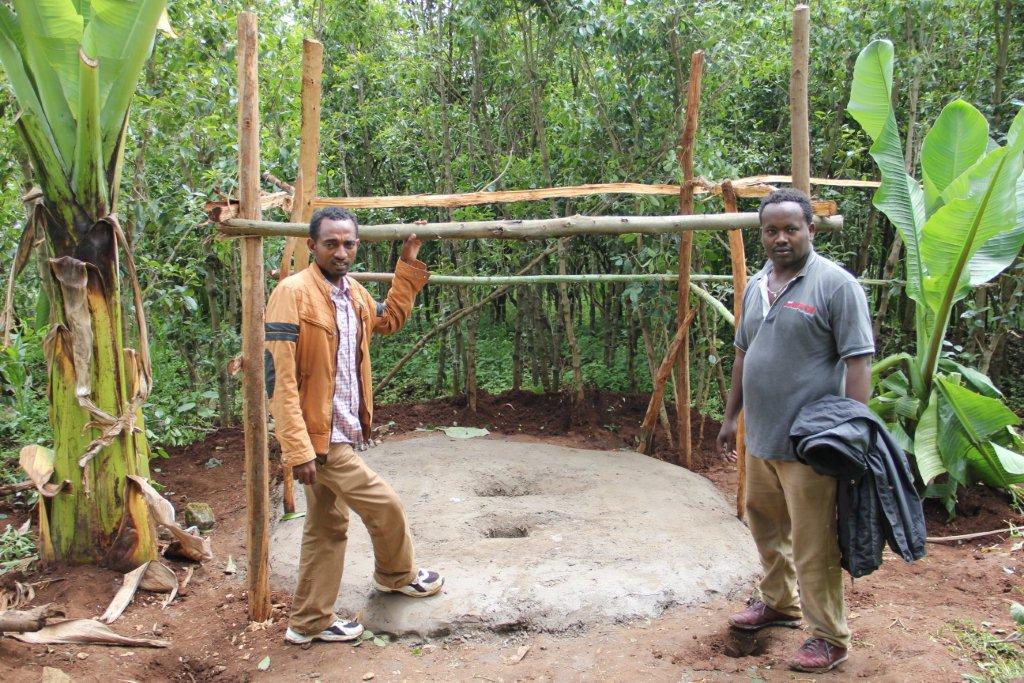
The picture above shows the construction underway for the one at Lalima. The two men in the picture are SCES staff members in charge of the water projects and the WASH training.
As we were leaving Kuchale and walking up out of the valley, we are passed by a woman carrying a very large jerry can (probably 50-55 lbs) with great determination. We follow her up the hill for more than ½ a mile, and she never stops for a moment to catch her breath.
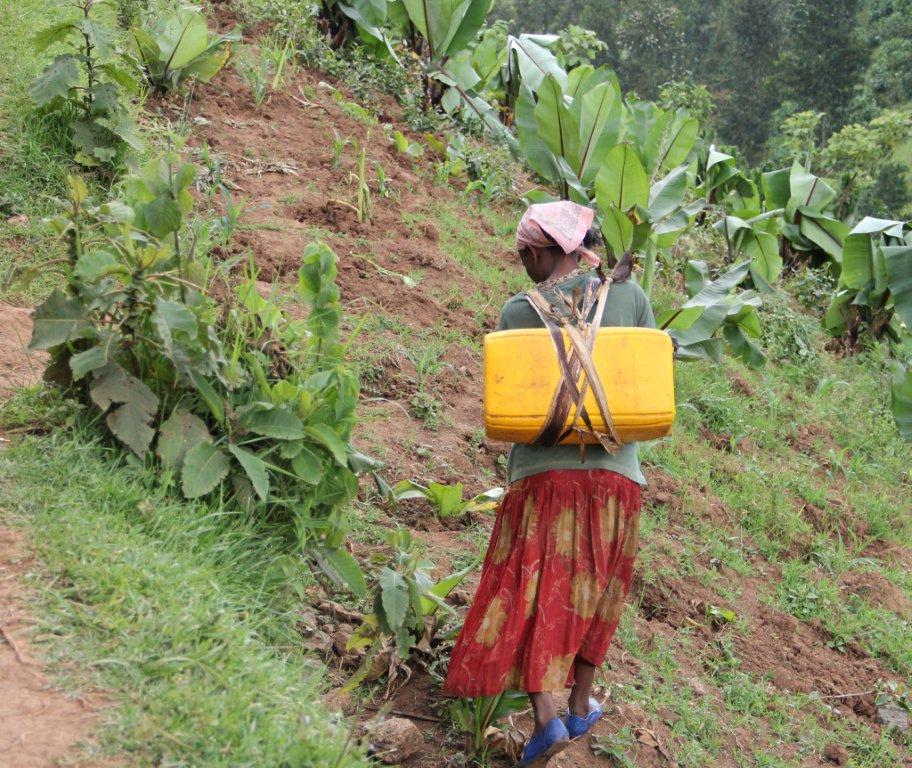
At the top of the hill we catch up and get to meet and learn more about Lemitu Tuli. She is 14, and is the head of the household for a family of 9. She runs the family as there is no adult male in the house. She provides food for her family primarily by farming and bartering in the market. She gathers water with her large jerry can twice a day, once in the morning and once in the afternoon. She says the new location of the water point has made it easier and shorter for her to gather the family’s water, before she hurries off to her home nearby.
The location of these projects presents some interesting navigation challenges for us all. You can see below Stacy Brown’s “flying leap” to get back across the valley stream from Kuchale!
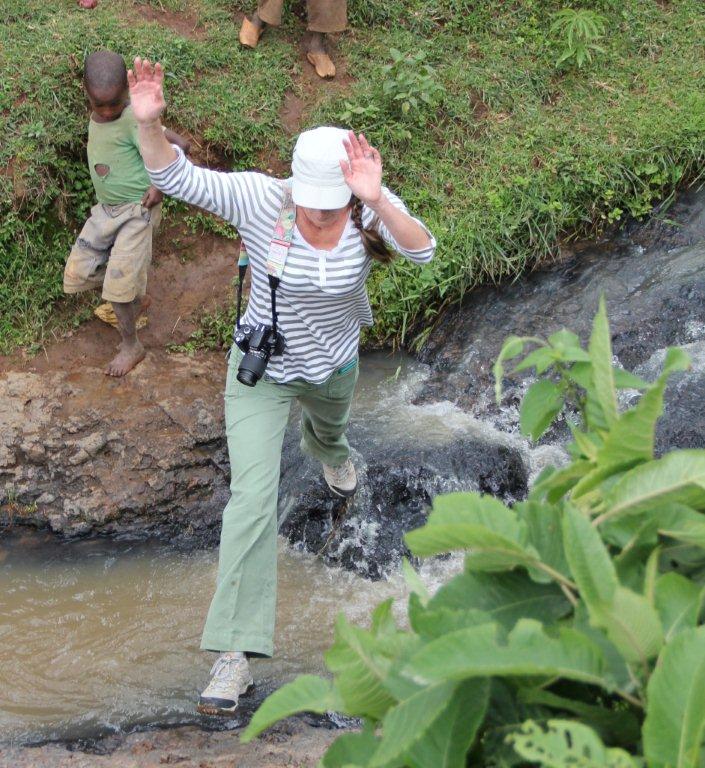
Happy to report that she made it safely…..and dry!
Our final project stop of the day was to check in the on the status of the in-progress hand dug well at Darashe.
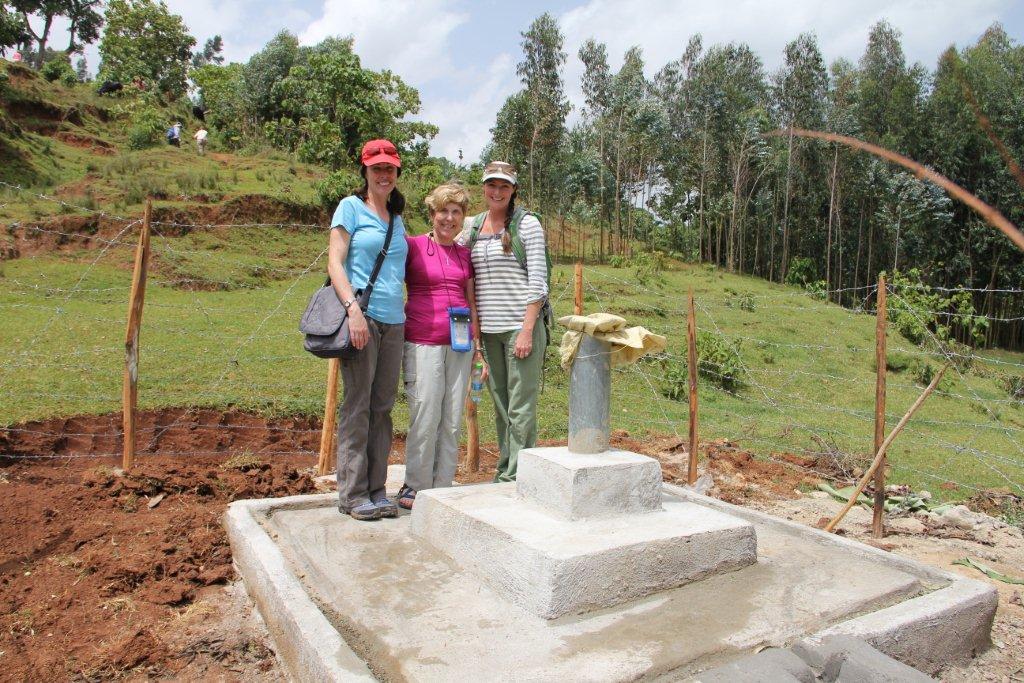
Suzanne Barrick, Carol Swisher and Stacy Brown check out the new project site above. It is only about two weeks away from completion and providing service to the community. The well is about 35 feet deep and has excellent water flow.
In addition to the water programs being developed by SCES, they are engaged in a number of other community development programs in the area such as sustainable food, land management and health education. We get to visit with another of their program managers that is training widow women on income producing activities. They are the trained on the basics of operating a small family business (raising livestock, selling coffee, raising vegetables for sale, etc.) Each get to decide the approach they will take and the program provides some small seed money to get started. The program started earlier this year with 30 widows and more than half are already saving some of their monthly income.
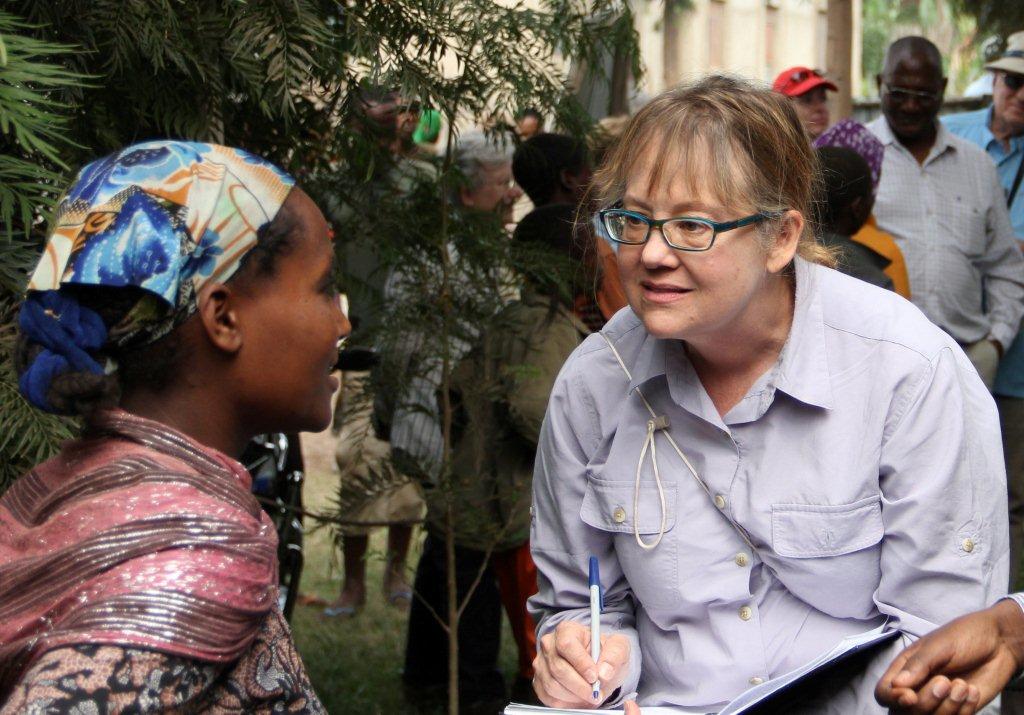
One of our travelers, Beth Senne-Duff (shown above on the right), is doing some research on the nutritional challenges for infants and young children in these communities. She takes the opportunity to interview one of the program participants, Marta Dangiso, to learn more about her feeding routine and dietary composition for her young children.
As we depart the area to head to our hotel, we are reminded how important our implementing partners are to serving these communities. They work in very difficult circumstances, often with minimal resources, but do it with great compassion and a real desire to help their people. It is through them that we collective get to help transform thousands of lives with clean water.
By Dick Moeller
Today, we are going to the field with our implementing partner in the South Central Ethiopian Synod (SCES) of the Mekane Yesus (Lutheran Church of Ethiopia, with more than 6 million members!). Water to Thrive is implementing 10 projects in a very needy area with low clean water coverage near Hawassa in the Malga district, about 1 hour from our hotel. We will be visiting 3 projects sites today, 2 finished spring protection systems, Lalima and Kuchale and one hand dug well, Darashe, which is about 2 weeks from being finished.
Typical of our spring systems, these first two sites are located in deep verdant valleys which provide a year round source of water for the springs. Having rained recently, the paths down to the projects are very slippery and treacherous.


We could not help but notice the contrast…..while we are making our way down the hill slowly and with help, three women and two children pass us going up the hill, moving with ease and speed, coming from the nearby water point. Notice in the picture above, each is carrying two jerry cans!
At both the completed spring systems, we are greeted by the community and the water committee, all with smiling faces, expressing their gratefulness for clean water. They mention numerous times how much safer it is now for those gathering water. Both projects are literally built on the side of the hill with sharp drop offs, that are now protected by concrete aprons and fencing.


One thing was very noticeable at these two sites…..there were many young, very young children carrying water for their families, more so than we typically see at many other sites. At Kuchale (top picture) the reservoir for the water point provided a natural place for them to gather. In this group, when asked how many go to school, nearly all raised their hands!
An important element of our projects with SCES is water sanitation and hygiene (WASH) training for the communities. Each community participates in constructing a demonstration latrine, so that families can learn the proper construction techniques for their homes.

The picture above shows the construction underway for the one at Lalima. The two men in the picture are SCES staff members in charge of the water projects and the WASH training.
As we were leaving Kuchale and walking up out of the valley, we are passed by a woman carrying a very large jerry can (probably 50-55 lbs) with great determination. We follow her up the hill for more than ½ a mile, and she never stops for a moment to catch her breath.

At the top of the hill we catch up and get to meet and learn more about Lemitu Tuli. She is 14, and is the head of the household for a family of 9. She runs the family as there is no adult male in the house. She provides food for her family primarily by farming and bartering in the market. She gathers water with her large jerry can twice a day, once in the morning and once in the afternoon. She says the new location of the water point has made it easier and shorter for her to gather the family’s water, before she hurries off to her home nearby.
The location of these projects presents some interesting navigation challenges for us all. You can see below Stacy Brown’s “flying leap” to get back across the valley stream from Kuchale!

Happy to report that she made it safely…..and dry!
Our final project stop of the day was to check in the on the status of the in-progress hand dug well at Darashe.

Suzanne Barrick, Carol Swisher and Stacy Brown check out the new project site above. It is only about two weeks away from completion and providing service to the community. The well is about 35 feet deep and has excellent water flow.
In addition to the water programs being developed by SCES, they are engaged in a number of other community development programs in the area such as sustainable food, land management and health education. We get to visit with another of their program managers that is training widow women on income producing activities. They are the trained on the basics of operating a small family business (raising livestock, selling coffee, raising vegetables for sale, etc.) Each get to decide the approach they will take and the program provides some small seed money to get started. The program started earlier this year with 30 widows and more than half are already saving some of their monthly income.

One of our travelers, Beth Senne-Duff (shown above on the right), is doing some research on the nutritional challenges for infants and young children in these communities. She takes the opportunity to interview one of the program participants, Marta Dangiso, to learn more about her feeding routine and dietary composition for her young children.
As we depart the area to head to our hotel, we are reminded how important our implementing partners are to serving these communities. They work in very difficult circumstances, often with minimal resources, but do it with great compassion and a real desire to help their people. It is through them that we collective get to help transform thousands of lives with clean water.

About The Author: Meredith
More posts by Meredith